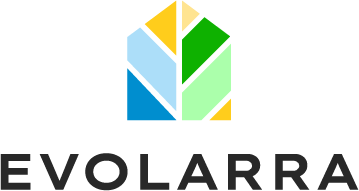
Facing Truth
The way you think is the gatekeeper to everything you build, become, and believe.
Whether your life drifts or advances, whether your goals fulfill or mislead, you are always living inside the consequences of your own reasoning. The Intellectual Area strengthens the system behind it all: how you interpret, decide, and adjust in a world that rarely offers certainty.
THE INTELLECTUAL AREA
Your rational thinking builds the internal structures that let you process complexity, update your beliefs, evaluate your choices, and move forward with confidence, in a world that refuses to give you perfect information. It sharpens how you interpret the world, so the goals you pursue actually align with who you are, and the plans you create are built on insight, not assumption.
This is how you design a life you’ll want to keep living.
Most people drift toward what looks good or familiar. They follow paths inherited from family, school, or culture, then lock in, defend, and optimize without ever checking whether the path itself fits. Ten years later, they’ve worked hard, stayed committed, and still feel off. The problem wasn’t effort, it was the lack of good decisions. This area is concerned with making sure that your aim is real, measured against truth, not illusion.
The Intellectual Area gives you the edge when the outcome isn’t guaranteed. It trains you to think in probabilities, not wishful thinking, to improve your odds over time by relying on analysis, not opinion. Roger Federer became the greatest of all time by winning just 54% of the points he played. He didn’t dominate every moment. He edged ahead consistently, by structuring the game in his favor again and again.
That’s what this area does for your life.
When choices feel uncertain, facts and structured thinking may not guarantee the outcome, but they consistently improve your position over time. In investing, for example, data shows that portfolios grounded in evidence-based principles, diversification, cost efficiency, risk-adjusted return, outperform intuition-driven stock picking over the long term. In medicine, diagnostic accuracy rises sharply when clinicians follow checklists and statistical models instead of relying on hunches. In aviation, accidents have dropped dramatically not because pilots feel more confident, but because protocols, data, and deliberate reasoning replaced gut-based decisions under stress.
The principle is consistent: decisions grounded in verifiable reality outperform those built on instinct, anecdote, or narrative. In the moment, opinion may feel stronger. But across a career, across relationships, across systems, the person who sees more clearly, reasons more structurally, and updates faster builds an advantage that grows with time.
Every other area of life, emotional, mental, spiritual, relational, vocational, draws strength from the quality of your thinking. This is where that quality is forged. Through refinement. Through reasoning. Through self-correction. Through conscious intellectual evolution.
This is how you build a life of direction, not drift.
This is how you adapt fast, without losing integrity.
This is how you create clarity where others see noise.
The Intellectual Area gives you the capacity to choose a path that stays true, and the structure to navigate uncertainty while improving your odds with every step.
Everything you want to become depends on that.
What This Chapter Builds
Recognizing Bias and Correcting Course Early
You build the ability to recognize when your perception is skewed, and to adjust your course while your time, energy, and options are still intact. Our brains rely on mental shortcuts to conserve energy, confirmation bias, anchoring, the sunk cost fallacy, and those same shortcuts can quietly lock us into beliefs and choices that no longer serve us. This section gives you practical tools to challenge your internal narratives in motion: falsification drills, counter-view prompts, and pre-mortem testing for assumptions. The result is a way of thinking that stays aligned with what is true, not just what feels familiar or self-reinforcing. In life, this means you spot early when a career is wrong, when a relationship is built on outdated expectations, or when a goal has become an identity trap. Studies in behavioral forecasting show that individuals trained to seek out disconfirming evidence make significantly better long-term decisions. But the value is even more personal: a clear mind catches misalignment before it turns into regret.
Thinking Clearly Under Uncertainty
You strengthen your ability to make high-quality decisions when certainty is out of reach and clarity won’t arrive on time. In practice, this means learning to structure decisions using probabilities, scenario thinking, constraint design, and base-rate logic, so you’re not making emotional bets or waiting endlessly for perfect information. When the stakes are high, whether launching a business, choosing a partner, or navigating a major life shift, this capability helps you move forward with confidence that’s grounded in structure, not guesswork. You’ll also learn to build “kill criteria,” exit points, and pre-defined rules that protect you from drifting too long down the wrong path. This approach mirrors decision-making systems used in elite domains, venture capital, medicine, intelligence analysis, where speed matters, but clarity is rarely complete. You gain the ability to stay in motion, stay intelligent, and stay adaptive, no matter how much ambiguity surrounds you.
Building Structured, Durable Knowledge
You develop a mind that doesn’t just absorb information, but actually organizes, retains, and applies what matters. This section shows you how to use active recall, spaced repetition, and structured layering of ideas to form an intellectual foundation that strengthens through use. You’ll learn how to build learning systems that combine breadth and depth, so you stay strategically informed without drowning in noise. The goal isn’t to memorize more, it’s to think with more leverage. The more organized your knowledge becomes, the more mental bandwidth you have for creativity, precision, and speed. Research in cognitive science consistently shows that spaced and structured learning methods outperform passive review by a factor of two or more in long-term retention and flexible application. In real life, this means faster problem solving, smarter synthesis, and a learning curve that actually curves up.
Decision Architecture
You learn to design decisions that hold up under time, stress, and complexity. This isn’t about deciding faster, it’s about deciding smarter, with more structure, more resilience, and more foresight. You’ll learn to break down decisions by reversibility, trade-offs, time horizons, and second- or third-order consequences. You’ll build habits of separating goals from methods, surfacing hidden constraints, and stacking options that preserve flexibility. This turns decision-making from a reactive process into a creative, strategic one. The same principles used by elite strategists and systems designers, first principles thinking, MECE analysis, and constraint mapping, are made usable here for personal and professional life. Whether you’re choosing between two career paths or launching a long-term personal project, the difference isn’t how smart you are, it’s how well you structure the choice. That’s what gives your decisions their lasting power.
Creative Thinking with Constraint
You train the ability to generate novel, high-quality ideas on demand, not by waiting for inspiration, but by learning how to deliberately move your mind into generative mode. This section teaches you methods for structured creativity: lateral inversion, analogy transfer, cross-domain synthesis, and working within purposeful constraints. You’ll learn how to balance wild idea generation with sharp feasibility checks, so your creativity leads to useful breakthroughs, not scatter. The most innovative companies, artists, and problem-solvers don’t think randomly, they think divergently within strong structures. Real creativity, in real life, is not freedom from limits, it’s mastery of them. You leave with a replicable process to see what others miss, solve what others avoid, and build what others haven’t imagined yet.
Intellectual Humility and Cognitive Update
You develop a mindset that evolves with experience, without ego disruption or collapse. This capability lets you update your thinking at the right time, in the right direction, with the right tools. You’ll learn how to work with Bayesian-style revision, counterevidence drills, and assumption mapping to track what’s changing and how your frameworks need to adapt. The goal is not doubt, it’s confidence built on contact with reality. This section trains the difference between stubbornness and coherence. You become someone who can grow faster, think clearer, and collaborate better, because you’re not stuck defending outdated maps of the world. Research on intellectual humility shows strong links to improved learning, better forecasting accuracy, and greater trust in both leadership and close relationships. In practice, this capability means you learn from challenge, not retreat from it, and your mind keeps getting sharper as life gets more complex.
Integrating Thought and Execution
You close the loop between insight and action. This capability turns your thinking system into a performance system, so what you reflect on gets tested, and what you test gets refined. You’ll learn how to build active feedback loops, outcome reviews, decision journals, and antifragile routines that connect your ideas to results and your results back into your system. This is how learning becomes a continuous, adaptive engine, not a pile of past intentions. The best decision-makers, from athletes to founders to operators, build tight loops between idea, test, data, and iteration. This section brings that feedback rhythm into your life, so you’re not just thinking well in theory, you’re improving your world in practice, day by day.
